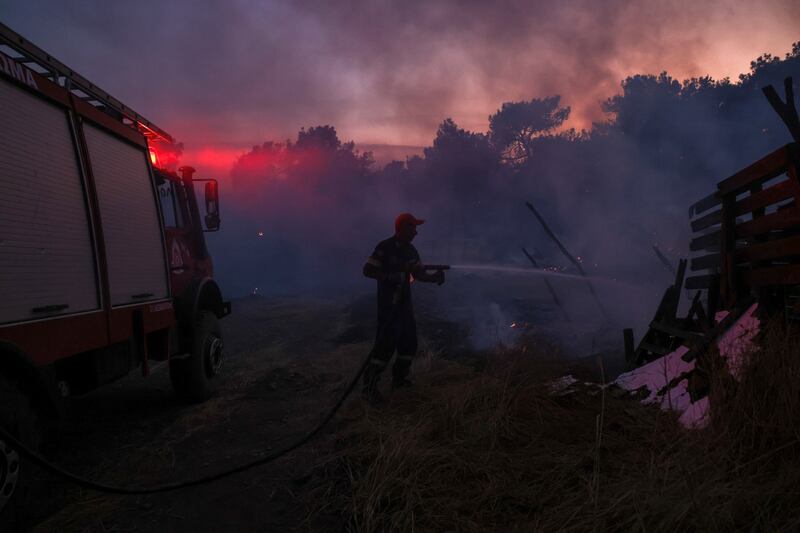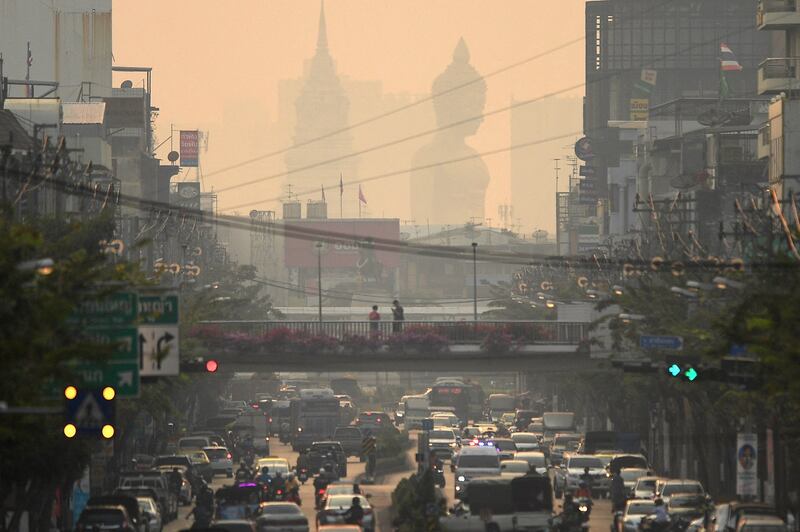This year’s June to August was the hottest on record globally by a large margin, as the season saw brutal and deadly temperatures, a new report from the World Meteorological Organization and the European climate service Copernicus said.
Meanwhile, another report by the U.N. weather agency said climate change-driven heatwaves, exacerbated by wildfires and desert dust, are intensifying and occurring more frequently, detrimentally affecting air quality, human health, and the environment.
The hottest Northern Hemisphere summer saw an average temperature of 16.77 degrees Celsius (62.19 degrees Fahrenheit), 0.66 C above average, according to the report by the WMO and Copernicus on Wednesday.
It said the global temperature anomaly for the first eight months of 2023 ranked second-warmest, only 0.01 C below 2016, currently the warmest year on record.
Last month was the warmest August globally and warmer than all other months except July 2023, when it broke the record with the global average temperature at 16.95 C (62.51 F).
The daily average global mean surface air temperature reached 17.08 C (62.74 F) on July 6, surpassing the record set in August 2016, making it the hottest day, with July 5 and 7 shortly behind.
The world’s oceans, which cover more than 70% of the Earth’s surface, were the hottest ever recorded, nearly 21 C (69.8 F), in August, breaking the record from March 2016.
“Global temperature records continue to tumble in 2023, with the warmest August following on from the warmest July and June, leading to the warmest boreal [Northern Hemisphere] summer in our data record going back to 1940,” said Samantha Burgess, deputy director of the Copernicus Climate Change Service.
“The scientific evidence is overwhelming – we will continue to see more climate records and intense and frequent extreme weather events impacting society and ecosystems until we stop emitting greenhouse gases.”

During the European summer, large parts of Asia, Central Europe, Canada, southern North America and most of South America experienced drier-than-average conditions, leading to significant wildfires in some areas.
“Our planet has just endured a season of simmering – the hottest summer on record. Climate breakdown has begun,” United Nations Secretary-General Antonio Guterres said in a statement.
“Scientists have long warned what our fossil fuel addiction will unleash,” he said. “Our climate is imploding faster than we can cope, with extreme weather events hitting every corner of the planet.”
Heatwaves and air pollution are interlinked
The frequency and intensity of heatwaves are rising due to climate change, and this pattern is anticipated to persist. The scientific community increasingly agrees that these heatwaves will elevate the likelihood and intensity of wildfires.
In 2022, the northwestern United States experienced wildfires due to heatwaves, while Europe faced heatwaves coupled with desert dust incursions, both resulting in hazardous air quality, said another report, the 2023 WMO Air Quality and Climate Bulletin, released on Wednesday.
“Heatwaves worsen air quality, with knock-on effects on human health, ecosystems, agriculture and indeed our daily lives,” the WMO’s Secretary-General Petteri Taalas said in a statement.
“Climate change and air quality cannot be treated separately. They go hand-in-hand and must be tackled together to break this vicious cycle,” he said.
Heatwaves can intensify air pollution by causing pollutants to become trapped closer to the ground and facilitating the formation of ground-level ozone and particulate matter (PM), a wide range of tiny particles in the atmosphere that harm human health.
Such ozone can also decrease the amount and quality of essential food crop yields, with wheat and soybean in major farming regions of India and China projected to decline by up to 30%.
Dry conditions due to heatwaves are also more conducive to rapidly growing, easily combustible wildfires.
“Heatwaves and wildfires are closely linked,” said WMO scientific officer Lorenzo Labrador.
“Smoke from wildfires contains a witch’s brew of chemicals that affects not only air quality and health but also damages plants, ecosystems and crops – and leads to more carbon emissions and so more greenhouse gases in the atmosphere.”
Earlier this year, the Lower Mekong region of Myanmar, Thailand and Laos was hit hard by an extreme haze crisis primarily due to wildfires and agricultural waste burning.

As the world enters El Niño conditions, a weather pattern characterized by hot ocean temperatures in the equatorial Pacific, it can significantly affect weather patterns worldwide.
In Southeast Asia, that would mean warmer, drier weather conditions, which could worsen natural and human-caused fires and air quality. The region has already started feeling the effects of the heatwave, with record-breaking heat in parts of Southeast Asia in April and May.
In recent weeks, wildfires have swept across vast regions of Canada, resulted in heartbreaking destruction and fatalities in Hawaii, and led to significant harm and loss of life in the Mediterranean area.
Edited by Mike Firn and Taejun Kang.
